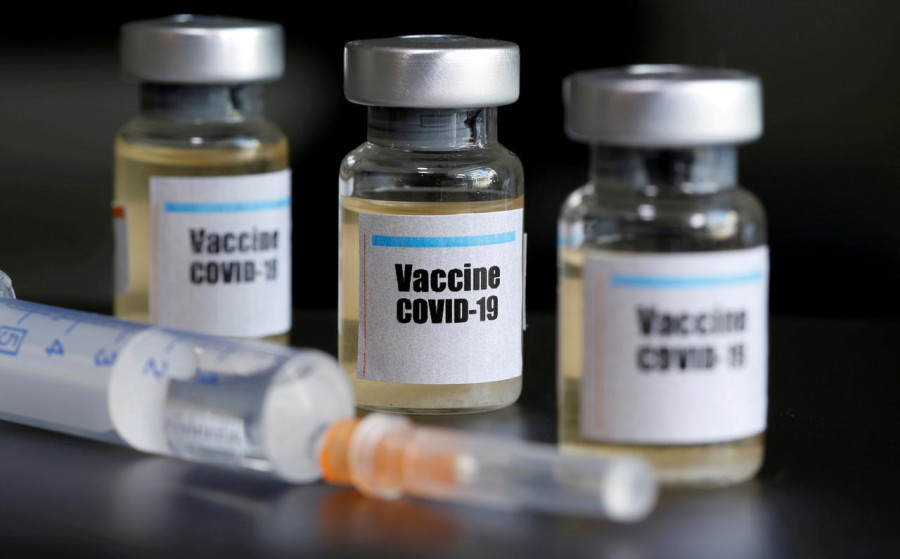
Kathmandu, December 6
Even as several South Asian countries, including India, Sri Lanka, Bhutan, and Bangladesh are rushing to complete their vaccination targets and finalizing booster shot strategies in the wake of rapid spread of the Omicron variant of coronavirus, the Nepal government seems to be floundering in the dark.
While Minister of Health and Population Birodh Khatiwada said at a program in Kavre yesterday that Nepal had stock of 20 million doses, director and officials belonging to the Department of Health, as well as the Ministry of Health and Population, contradicted the minister’s statement.
An official at the Department of Health asserted that the country had a stock of merely five million doses of the COVID vaccine.
Another official at the ministry said Minister Khatiwada might have referred to the fact that Nepal has so far received 27,600,000 doses of vaccines. Out out of this, 19 million doses have already been administered to people.
Considering the requirement of two doses of vaccines for 25 million people, the government will need at least 50 million vaccines. Booster shots will mean an additional 25 million doses. This means the government needs 75 million COVID vaccines.
Against this requirement, the world wide vaccine initiative COVAX, which is administered by the World Health Organization and GAVI, is committed to giving vaccine for only 20 per cent of eligible population. This means approximately five million people will be covered under the COVAX initiative and for this the government will get only 10 million doses in total.
Approximately seven million doses of 10 million doses have already reached Nepal.
However, since there is no firm commitment on the delivery schedules for the remaining tranches under this category, a crisis is looming large in the face of the spread of the Omicron variant.
The government has placed orders for 10 million doses from Pfizer and Moderna and will receive these doses only next year.
Delivery of five of the six million doses purchased from China remains pending.
Even if the government claims that it has 30-35 million doses in the pipeline, they still need approximately 10-20 million more doses for booster shots. On top of that, acceptability of Chinese vaccine Vero cell is abysmally low in the Terai belt.
Assistant Spokesperson Samir Kumar Adhikari said that six to seven million people were out of country working or studying in foreign countries and approximately 35 million vaccines that were in the pipeline would be sufficient to cover the actual population.
Although Adhikari said the government would get the pledged vaccines between December and March, there is no clear timeline for the delivery.
Public health expert Mahesh Kumar Maskey said other countries were providing booster shots to people with comorbidities and frontline workers after six months of the second dose.
Anup Subedi, senior consultant, general medicine and infectious disease at HAMS, said providing two doses of COVID vaccines should be the government’s priority before providing booster shots.
“We are one of the highly unvaccinated countries as more than 50 per cent of people remain unvaccinated,” Subedi said.
FACEBOOK COMMENTS